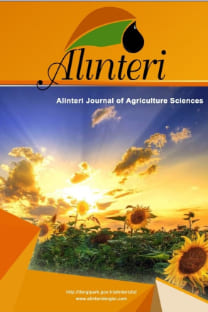For a Greener Environment: Standards versus Taxes
Environment, Taxes, Standards, Command and control
Daha Yeşil Bir Çevre İçin: Vergilere Karşı Standartlar
Çevre, Vergiler, Standartlar, Komuta ve kontrol,
___
- Andersen, M.S., Barker, T., Christie, E., Ekins, P., Gerald, J.F., Jilkova, J., Junankar, S., Landesmann, M., Pollitt,H., Salmons, R., Scott, S., and Speck, S. (eds.), 2007. Competitiveness Effects of Environmental Tax Reforms (COMETR). Final report to the European Commission. National Environmental Research institute, University of
- Aarhus. 543 pp. -http://www.dmu.dk/Pub/COMETR_Final_Report.pdf
- Ankara Regional Development Plan. 2011, Ankara Development Agency, Ankara.
- Alt J., Prestan, I., and Sibieta, L., 2008. The Political Economy of Tax Policy, Oxford University Press, London.
- Baumol, W., and Oates, W., 1988. The theory of Environmental Policy, Axes versus subsidies; a partial analysis, pp. 177-190, 2nd edition, Cambridge University Press.
- European Commission, 2013. European Semester:Country-Spesific Recommendations Moving Europe Beyond the Crisis, 29.05.2013, COM(2013) 350 final, Brussels.
- Goulder, L., and Parry, I.W.H., 2008. Instrument Choice in Environmental Policy, Discussion Paper, April 2008, RFF DP 08 07
- Hodge, I., 1996. Environmental Economics, Individual Incentives and Public Choices, pp.83-99, Macmillen Press Ltd., London.
- Hoel, M., and Kamp, L., 2002. Taxes versus quotas for a stock pollutant, Resource and Energy Economics 24 (2002), pp. 367-384
- Howes, M., 2005. Politics and Environment, Risk and the role of government and industry, pp. 87- 92, Earthscan Press, U.S.A.
- IEEP., 2013. Evaluation of environmental tax reforms: International experiences, Institute for European Environmental Policy (IEEP) 55 Quai au Foin, 1000 Brussels, Belgium, 21 June 2013, pp. 39-40
- Kosonen, K., and Nicodeme, G., 2009. The role of fiscal instruments in environmental policy, Cesifo Working Paper No.2719, Category:10, Energy and Climate Economics, July 2009.
- Lomborgh, B., 2001. The Skeptical Environmentalist, Measuring the Real State of the World, pp. 166-167, University press of Cambridge, U.K.
- OECD. 2013. Climate and Carbon, Aligning prices and policies, OECD Environment Policy Paper, No:01
- Pieler, G., 2000. Tax Reform is Green, “Green” Taxes aren`t, Competitive Enterprise Institute, U.S.A.
- RCEP. 1998. Environmental Standards and Public Values-Summary, A summary of the Twenty-first Report of the Royal Commission on Environmental Pollution, pp. 14-14, London.
- Rovellato, A., Bosella, F., and Gipponi, C., 2007. Cost-effectiveness of greenhouse gas mitigation measures in the European Agro-forestry sector: a literature survey, Environmental science&policy, European Commission, 10, pp. 474-490.
- Sheffrin, S., 1993. Markets and Majourities, The free press, pp. 121-134, Newyork.
- Tindale, S., and Holtham, G., 1996. Green Tax Reform, IPPR, London.
- Tietenberg, T., 1996. Environmental and National Resource Economics, 4th Edition, pp. 334-346, Newyork.
- ISSN: 2564-7814
- Yayın Aralığı: 2
- Başlangıç: 2007
- Yayıncı: Adem Yavuz SÖNMEZ
İsmail ÜLGER, Mahmut KALİBER, Selma BÜYÜKKILIÇ BEYZİ, Yusuf KONCA
Erzurum İli Büyükbaş Hayvancılığının Durumu Ve Gelişmesine Yönelik Öneriler
Rıdvan KOÇYİĞİT, Recep AYDIN, Abdulkerim DİLER
Trabzon İli Beşikdüzü İlçesinde Balık Eti Tüketim Alışkanlıklarının Belirlenmesi
A. Semih UZUNDUMLU, Esra DİNÇEL
Mersin İli Tarımsal Biyokütle Enerji Eşdeğer Potansiyeli
Bünyamin DEMİR, Zeynel Abidin KUŞ, Hasan Ali İRİK, Necati ÇETİN
